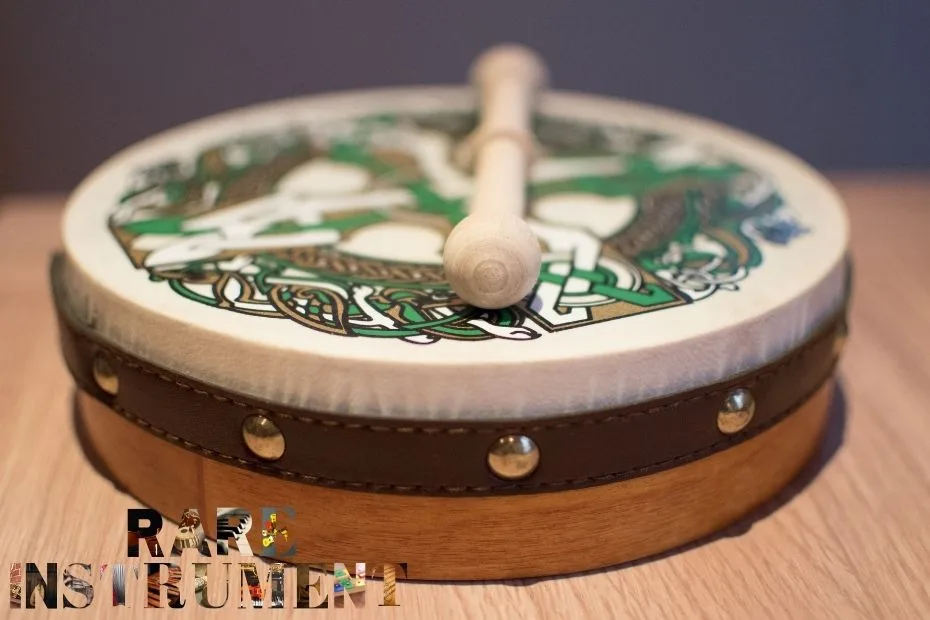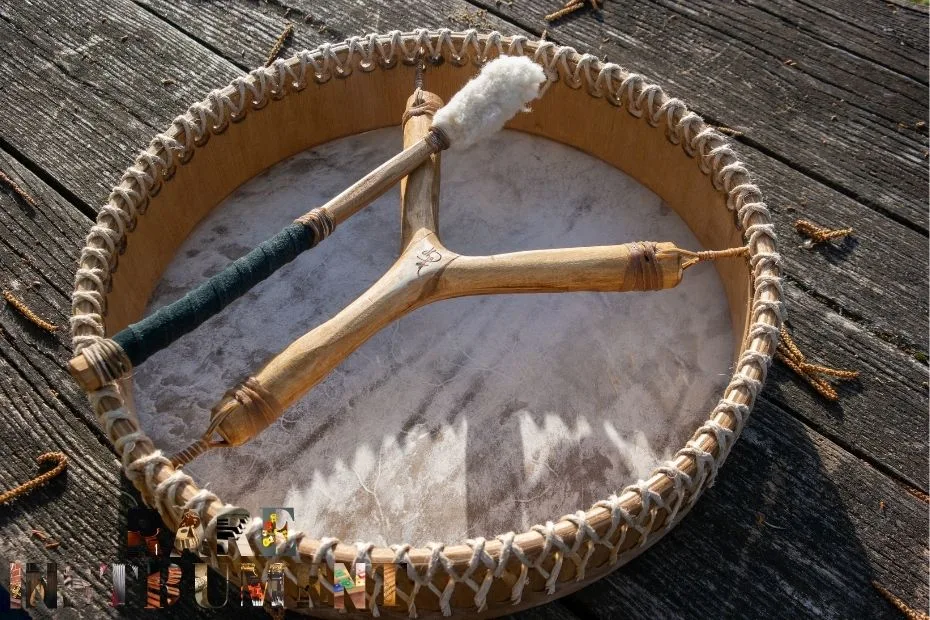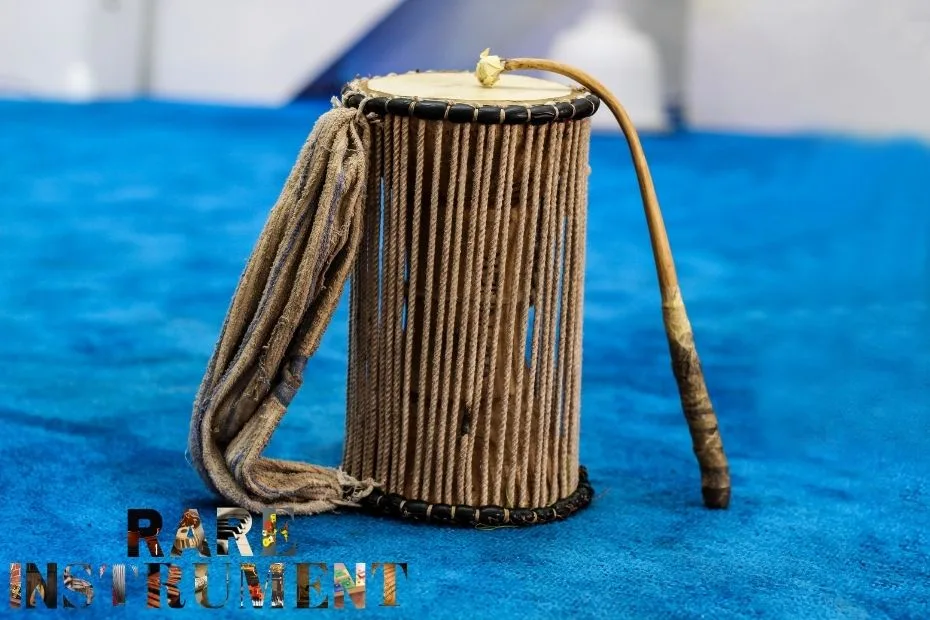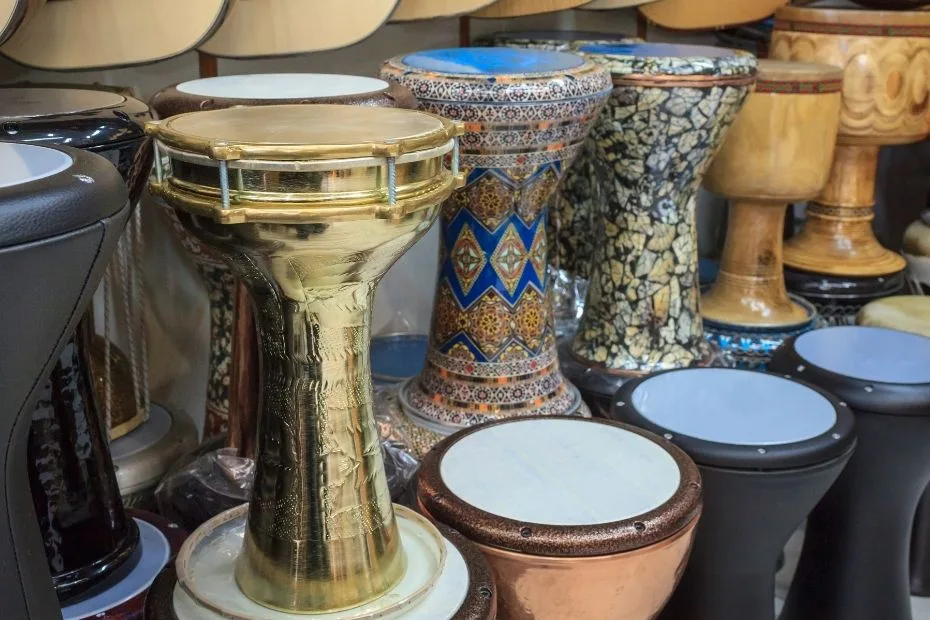Frame drums are versatile, and their sound depends heavily on how you strike them. Bodhran players often use a tipper stick with alternating hand damping, while Tar players rely on finger rolls, slaps, and hand pressure. Experimenting with hand positions, speed, and accents allows for a wide palette of tones.
- Finger Taps: Short, precise strikes with fingertips produce bright, crisp tones.
- Hand Rolls: Glide fingers across the drumhead for sustained, flowing rhythms.
- Heel-to-Finger Technique: Alternate between the heel and fingertips for dynamic expression.
- Using a Tipper (Bodhran): Rocking motion for fast, rolling patterns typical in Irish music.
- Accent Patterns: Emphasize specific beats to sync with other instruments or dance movements.
Tuning and Maintenance
Frame drum tuning depends on the drumhead material and weather conditions. Traditional goat skin heads are sensitive to humidity and temperature, while synthetic heads are more stable.
- Adjusting Traditional Heads: Loosen or tighten ropes (if present) or apply slight moisture to stretch the skin evenly.
- Synthetic Heads: Usually tensioned by screws or fixed frames; maintain per manufacturer instructions.
- Regular Cleaning: Wipe with a dry or slightly damp cloth. Avoid harsh chemicals.
- Storage: Keep drums in a cool, dry area, away from direct sunlight.
- Inspection: Check for cracks, loose frames, or skin damage and repair promptly.
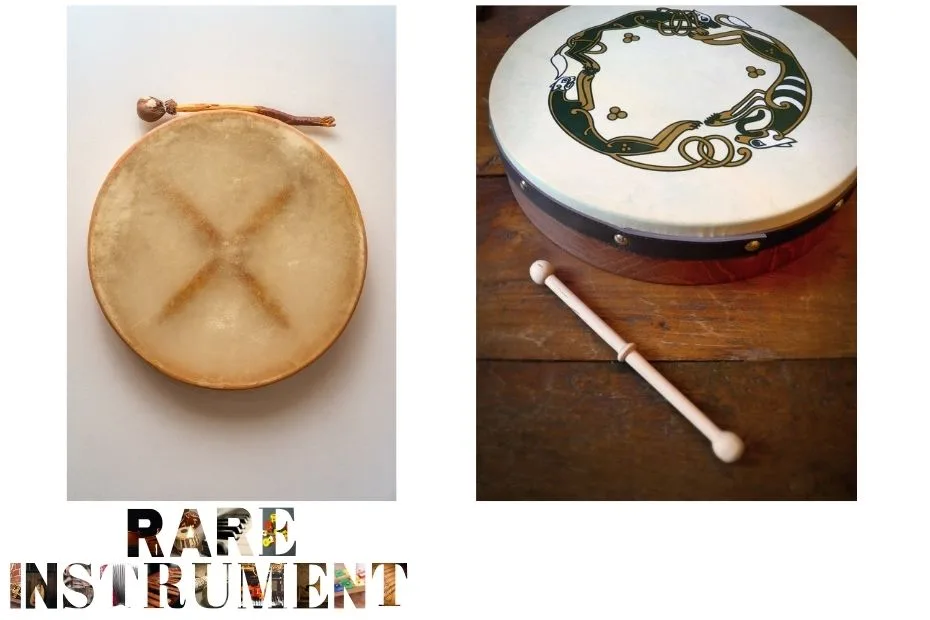
Accessories to Enhance Performance
- Drum Bags: Protect during travel.
- Tipper Sticks: For Bodhran, to produce authentic Irish rhythms.
- Practice Mats: Prevent slipping and reduce floor vibrations.
- Electronic Triggers: For hybrid drums to integrate acoustic and digital sounds.
- Seat Cushions: Improve comfort during long sessions.
Common Mistakes to Avoid
- Striking too hard, which can damage the drumhead.
- Ignoring climate effects on natural skins.
- Overlooking tuning adjustments before performance.
- Using harsh cleaning chemicals.
- Neglecting proper hand technique, leading to inconsistent tones.
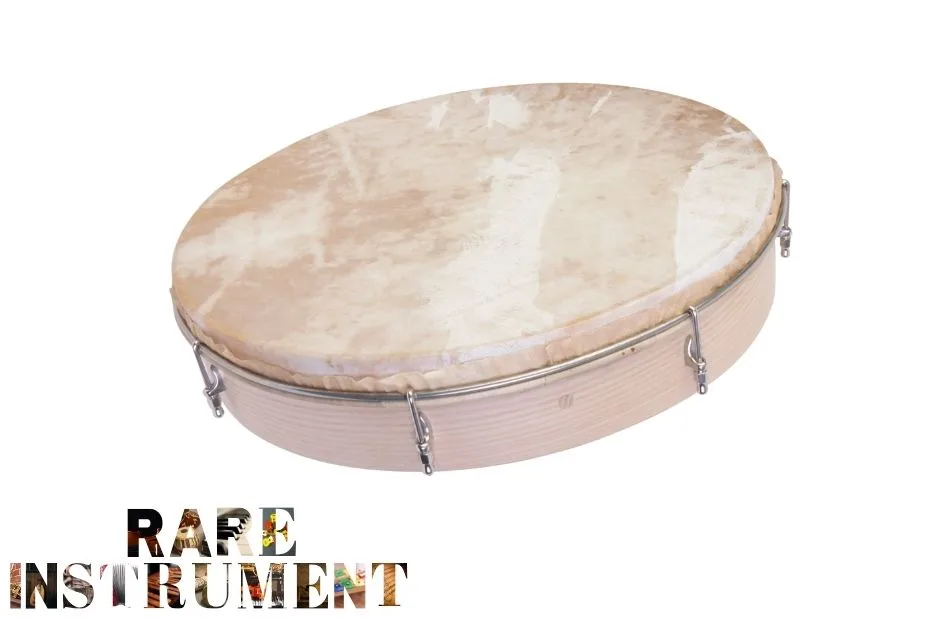
Advanced Tips for Expressive Playing
- Combine finger taps and hand rolls for intricate rhythms.
- Use subtle damping to control resonance.
- Explore cross-cultural rhythms to expand musical vocabulary.
- Record and analyze your sessions to fine-tune technique and tone.
FAQ
- What is a frame drum? A frame drum is a shallow, circular drum used worldwide, including Bodhran from Ireland and Tar from the Middle East.
- How do I tune a Bodhran or Tar? Traditional heads can be tuned with rope tension or slight moisture; synthetic heads are tensioned mechanically.
- How should I maintain my frame drum? Keep dry, avoid extreme temperatures, clean gently, and inspect for damage regularly.
- Which accessories are essential? Drum bag, tipper sticks (for Bodhran), practice mat, electronic triggers for hybrid drums, and seat cushions.
- When should I consult a professional? If skin is cracked, frame is loose, or tuning issues persist, a repair specialist should inspect the drum.
Playing Techniques for Frame Drums
Frame drums are versatile, and their sound depends heavily on how you strike them. Bodhran players often use a tipper stick with alternating hand damping, while Tar players rely on finger rolls, slaps, and hand pressure. Experimenting with hand positions, speed, and accents allows for a wide palette of tones.
- Finger Taps: Short, precise strikes with fingertips produce bright, crisp tones.
- Hand Rolls: Glide fingers across the drumhead for sustained, flowing rhythms.
- Heel-to-Finger Technique: Alternate between the heel and fingertips for dynamic expression.
- Using a Tipper (Bodhran): Rocking motion for fast, rolling patterns typical in Irish music.
- Accent Patterns: Emphasize specific beats to sync with other instruments or dance movements.
Tuning and Maintenance
Frame drum tuning depends on the drumhead material and weather conditions. Traditional goat skin heads are sensitive to humidity and temperature, while synthetic heads are more stable.
- Adjusting Traditional Heads: Loosen or tighten ropes (if present) or apply slight moisture to stretch the skin evenly.
- Synthetic Heads: Usually tensioned by screws or fixed frames; maintain per manufacturer instructions.
- Regular Cleaning: Wipe with a dry or slightly damp cloth. Avoid harsh chemicals.
- Storage: Keep drums in a cool, dry area, away from direct sunlight.
- Inspection: Check for cracks, loose frames, or skin damage and repair promptly.

Accessories to Enhance Performance
- Drum Bags: Protect during travel.
- Tipper Sticks: For Bodhran, to produce authentic Irish rhythms.
- Practice Mats: Prevent slipping and reduce floor vibrations.
- Electronic Triggers: For hybrid drums to integrate acoustic and digital sounds.
- Seat Cushions: Improve comfort during long sessions.
Common Mistakes to Avoid
- Striking too hard, which can damage the drumhead.
- Ignoring climate effects on natural skins.
- Overlooking tuning adjustments before performance.
- Using harsh cleaning chemicals.
- Neglecting proper hand technique, leading to inconsistent tones.

Advanced Tips for Expressive Playing
- Combine finger taps and hand rolls for intricate rhythms.
- Use subtle damping to control resonance.
- Explore cross-cultural rhythms to expand musical vocabulary.
- Record and analyze your sessions to fine-tune technique and tone.
FAQ
- What is a frame drum? A frame drum is a shallow, circular drum used worldwide, including Bodhran from Ireland and Tar from the Middle East.
- How do I tune a Bodhran or Tar? Traditional heads can be tuned with rope tension or slight moisture; synthetic heads are tensioned mechanically.
- How should I maintain my frame drum? Keep dry, avoid extreme temperatures, clean gently, and inspect for damage regularly.
- Which accessories are essential? Drum bag, tipper sticks (for Bodhran), practice mat, electronic triggers for hybrid drums, and seat cushions.
- When should I consult a professional? If skin is cracked, frame is loose, or tuning issues persist, a repair specialist should inspect the drum.
The frame drum is one of the oldest percussion instruments, used across cultures from Ireland to the Middle East. Its simple design—a circular frame with a drumhead stretched over it—belies the wide range of sounds and expressions it can produce. Whether you are exploring Bodhran from Ireland, Tar from North Africa, or modern hybrid frame drums, understanding the nuances of playing, tuning, and caring for these instruments is essential for musicians of all levels.
Frame Drums: Bodhrán and Tar Comparison
| Aspect | Bodhrán (Irish Frame Drum) | Tar (Middle Eastern/North African Frame Drum) |
|---|---|---|
| Origin | Ireland (19th century, with roots possibly dating further back) | Ancient Middle East and North Africa (with variations across many cultures) |
| Typical Size | 25-65 cm (10-26 inches) in diameter, 9-20 cm (3.5-8 inches) deep | 20-50 cm (8-20 inches) in diameter, 5-12 cm (2-5 inches) deep |
| Construction | Wooden frame with goatskin head, often has cross-bracing inside | Wooden frame with fishskin, goatskin or synthetic head, often with metal jingles |
| Playing Technique | Played with a double-ended stick called a “tipper” or “beater” | Typically played with fingers and hands, sometimes with sticks |
| Sound Characteristics | Deep, resonant bass with sharp attack; pitch can be adjusted by hand pressure | Bright, sharp sound with jingling overtones from metal rings or cymbals |
| Traditional Use | Irish folk music, céilí bands, accompaniment for dance tunes | Folk music, religious ceremonies, Sufi rituals, and celebrations |
| Playing Position | Held vertically on the knee, supported by hand and arm | Held in one hand or placed on lap, played with the other hand |
| Notable Features | Often has a crossbar inside for hand support and tuning control | Frequently features pairs of metal jingles (similar to tambourine) |
| Regional Variations | Different regional styles in Ireland (e.g. Kerry, Sligo styles) | Many regional types: Bendir (Morocco), Daf (Persian), Riq (Arabic) |
| Modern Usage | Still primarily in traditional Irish music, occasionally in folk fusion | Used in world music, fusion, and contemporary Middle Eastern music |
| Notable Players | Johnny McDonagh, Caroline Corr, Mel Mercier, Eamon Murray | Zohar Fresco, Glen Velez, Mohammad Reza Mortazavi, Misirli Ahmet |
| Learning Resources | Traditional apprenticeship, workshops at Irish music festivals | Master-apprentice tradition, online tutorials, world music programs |
Playing Techniques for Frame Drums
Frame drums are versatile, and their sound depends heavily on how you strike them. Bodhran players often use a tipper stick with alternating hand damping, while Tar players rely on finger rolls, slaps, and hand pressure. Experimenting with hand positions, speed, and accents allows for a wide palette of tones.
- Finger Taps: Short, precise strikes with fingertips produce bright, crisp tones.
- Hand Rolls: Glide fingers across the drumhead for sustained, flowing rhythms.
- Heel-to-Finger Technique: Alternate between the heel and fingertips for dynamic expression.
- Using a Tipper (Bodhran): Rocking motion for fast, rolling patterns typical in Irish music.
- Accent Patterns: Emphasize specific beats to sync with other instruments or dance movements.
Tuning and Maintenance
Frame drum tuning depends on the drumhead material and weather conditions. Traditional goat skin heads are sensitive to humidity and temperature, while synthetic heads are more stable.
- Adjusting Traditional Heads: Loosen or tighten ropes (if present) or apply slight moisture to stretch the skin evenly.
- Synthetic Heads: Usually tensioned by screws or fixed frames; maintain per manufacturer instructions.
- Regular Cleaning: Wipe with a dry or slightly damp cloth. Avoid harsh chemicals.
- Storage: Keep drums in a cool, dry area, away from direct sunlight.
- Inspection: Check for cracks, loose frames, or skin damage and repair promptly.

Accessories to Enhance Performance
- Drum Bags: Protect during travel.
- Tipper Sticks: For Bodhran, to produce authentic Irish rhythms.
- Practice Mats: Prevent slipping and reduce floor vibrations.
- Electronic Triggers: For hybrid drums to integrate acoustic and digital sounds.
- Seat Cushions: Improve comfort during long sessions.
Common Mistakes to Avoid
- Striking too hard, which can damage the drumhead.
- Ignoring climate effects on natural skins.
- Overlooking tuning adjustments before performance.
- Using harsh cleaning chemicals.
- Neglecting proper hand technique, leading to inconsistent tones.

Advanced Tips for Expressive Playing
- Combine finger taps and hand rolls for intricate rhythms.
- Use subtle damping to control resonance.
- Explore cross-cultural rhythms to expand musical vocabulary.
- Record and analyze your sessions to fine-tune technique and tone.
FAQ
- What is a frame drum? A frame drum is a shallow, circular drum used worldwide, including Bodhran from Ireland and Tar from the Middle East.
- How do I tune a Bodhran or Tar? Traditional heads can be tuned with rope tension or slight moisture; synthetic heads are tensioned mechanically.
- How should I maintain my frame drum? Keep dry, avoid extreme temperatures, clean gently, and inspect for damage regularly.
- Which accessories are essential? Drum bag, tipper sticks (for Bodhran), practice mat, electronic triggers for hybrid drums, and seat cushions.
- When should I consult a professional? If skin is cracked, frame is loose, or tuning issues persist, a repair specialist should inspect the drum.

